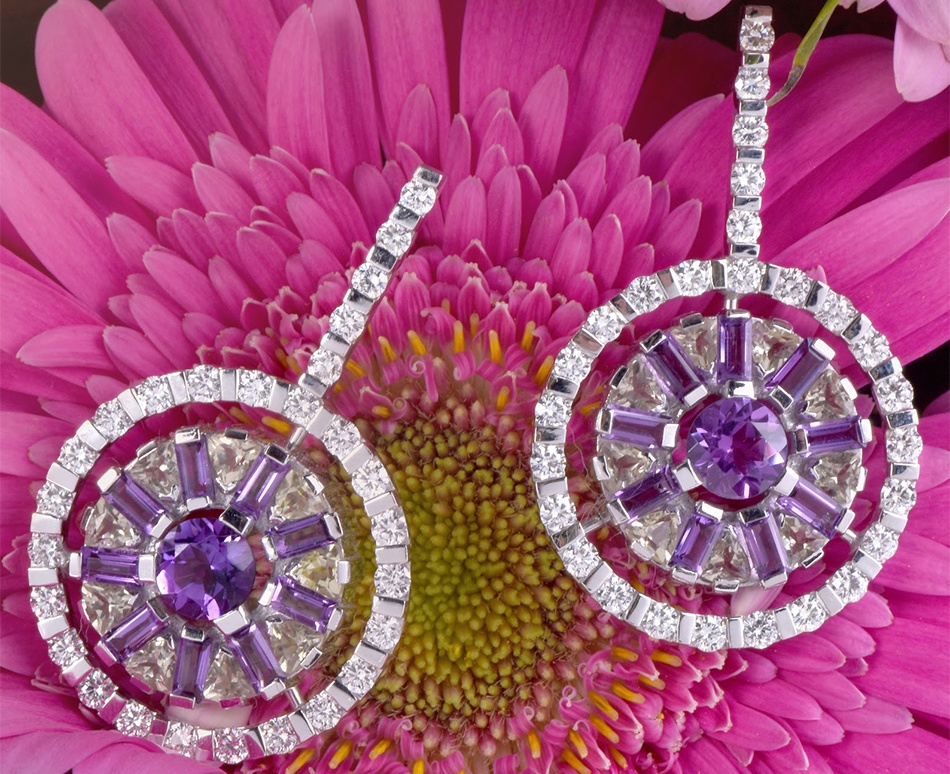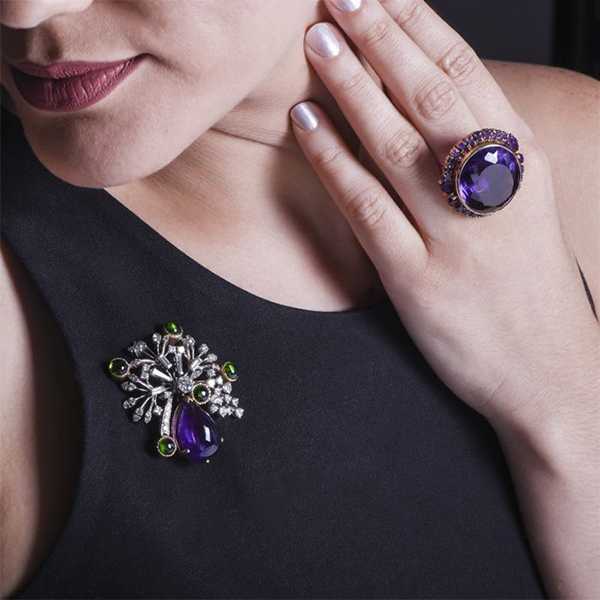
The name amethyst derives from the ancient Greek word ‘Amethystos’ which can be translated as ‘sober’, and it boasts of royalty, a rich-violet purple, and it can be found in all shades of purple, lilac and mauve all of which are referred to as ‘royal gem’.
Amethyst is not only the recognized February birthstone. It is also the gemstone for the 6th and 17th marriage anniversaries.
Ruled by the planet Jupiter, amethyst is the gemstone for those born under the sign of Aquarius and Pisces and is included on both traditional and modern lists of birthstones for the month of February. Saint Valentine was said to have worn an amethyst ring carved with Cupid’s likeness. This may seem an unlikely pairing, given the gem’s reputation for calming passions! But in Medieval times, chaste love was highly valued as true love and amethyst was believed to signify that particular vision of love.
The ‘royal gem’ also possesses religious connotations: It was one of the twelve stones adorning the breastplate of the high priest Aaron (Exodus 39) and is also associated with the spirits of the Apostle Matthias as well as the guardian Angel Adnachiel. Some early Christians associated the amethyst with Christ. The gem’s purple colors represented purity of spirit, while its purplish and reddish nuances represented the chastening and purifying effects of suffering. Some believed the colors alluded to the wounds and suffering of Christ. Thus, amethyst was used to aid the healing of wounds.
Amethyst’s calming presence is thought to produce soothing dreams and also said to help the mind flow freely in both mental and metaphysical dimensions. Many psychics keep this gem with their tarot cards or other oracular instruments.
The Myth of Amethyst by a French Renaissance Poet
This is a mythological tale created by the French poet Remy Belleau in 1576, as part of a poem on gemstone beliefs. The following is an extract from the story presented in a classical guise:
“A long time ago, a beautiful maiden was on her way to worship at the Temple of Diana. However, she had the misfortune of crossing paths with the god of wine, Bacchus. Angered since he’d just suffered some slight, he’d vowed to take revenge on the next person he met. He spied the maid and unleashed his two guardian tigers upon her. As the great beasts bounded towards the hapless lass, the goddess Diana intervened. To spare her such a terrible fate, she turned her into a pure, clear stone. Immediately, remorse seized Bacchus. To atone for his actions, he poured his wine over the stone, staining the crystal a deep, violet hue. And so, the maiden Amethyst lent her name to the crystal….”
Although the tale was created in the Renaissance era, the belief that amethyst could guard against drunkenness dated farther back to the ancient Greeks, implicit in the gemstone’s name ‘amethystos’ meaning ‘sober ‘ or ‘not drunk’.
And to complement our poetic tale, herewith a poem entitled ‘The Amethyst’ though from an unknown poet:
“The Amethyst.
From passion and from care kept free
Shall Pisces’ children ever be
Who wear so all the world may see”
Perhaps this association with calming physical passions led some early Christians to associate the amethyst with Christ. The gem’s purple colors represented purity of spirit. Its purplish and reddish tones represented the chastening and purifying effects of suffering. Some believed the colors alluded to the wounds and suffering of Christ. Thus, amethysts were used to aid the healing of wounds.
Amethysts Used for Protective Amulets…
Ancient Egyptians used amethysts in producing amulets as both a form of prayer and protection against harm. Although at a later point of time in the history Egyptian artisans created elaborate and breathtaking pieces, early jewelry makers found their designs more practical .and kept them intact. Amethyst gems would continue to be carved into different shapes of animals, believed to be protective while In later times, an organized priesthood produced these officially as amulets.
Physical Properties of Amethysts:
As a gemstone, amethyst is the most highly prized variety of quartz and obtains its fascinating hues from iron impurities and the presence of trace elements. It often occurs in hexagonal-shaped crystals and in metamorphic rocks, particularly granite. The physical properties of the amethyst may differ considerably depending on their location to the extent that a gemstone expert can recognize the provenance just by looking at the stone! Amethyst’s hardness and durability makes it an optimal gemstone for all items of jewelry.



